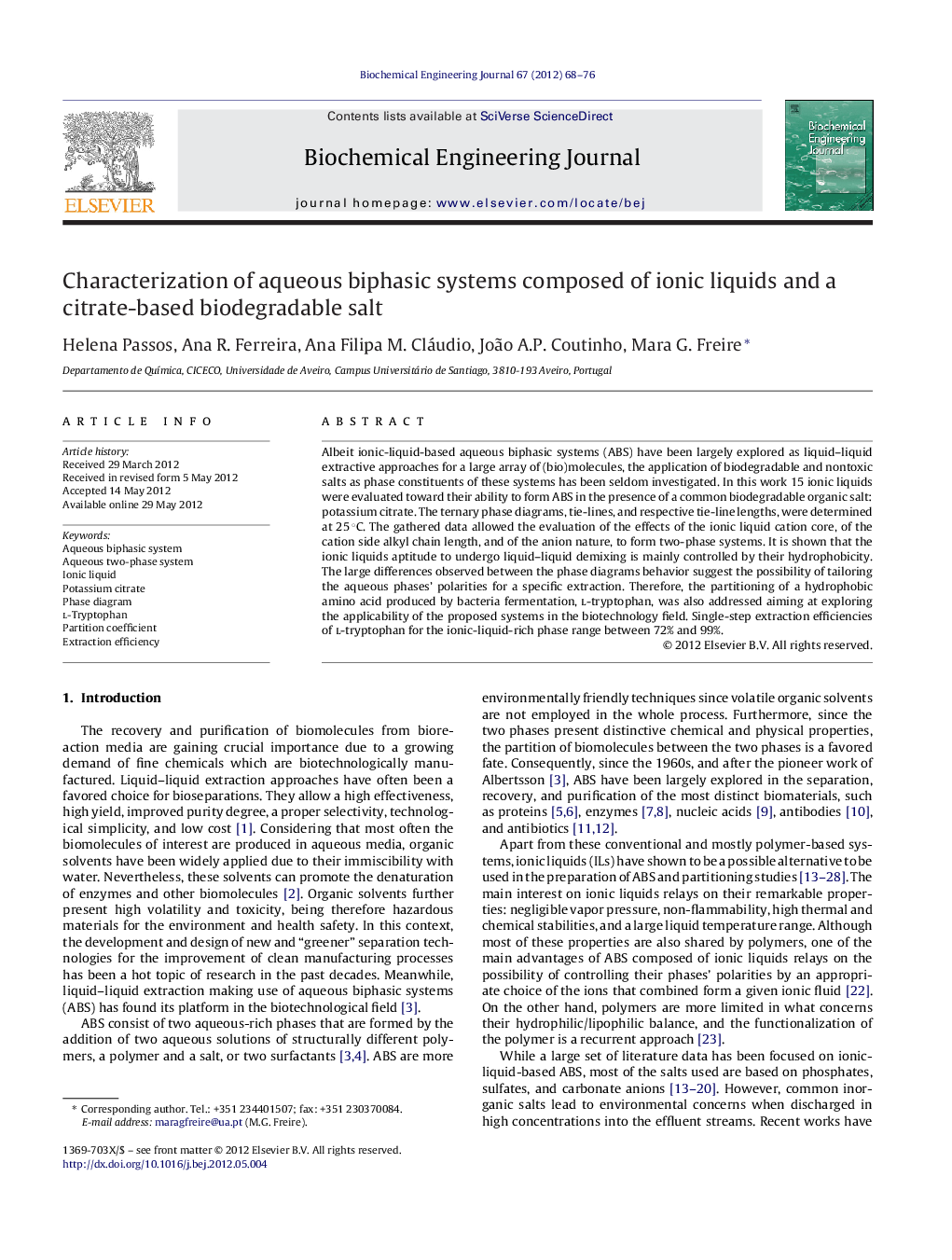| Article ID | Journal | Published Year | Pages | File Type |
|---|---|---|---|---|
| 3505 | Biochemical Engineering Journal | 2012 | 9 Pages |
Albeit ionic-liquid-based aqueous biphasic systems (ABS) have been largely explored as liquid–liquid extractive approaches for a large array of (bio)molecules, the application of biodegradable and nontoxic salts as phase constituents of these systems has been seldom investigated. In this work 15 ionic liquids were evaluated toward their ability to form ABS in the presence of a common biodegradable organic salt: potassium citrate. The ternary phase diagrams, tie-lines, and respective tie-line lengths, were determined at 25 °C. The gathered data allowed the evaluation of the effects of the ionic liquid cation core, of the cation side alkyl chain length, and of the anion nature, to form two-phase systems. It is shown that the ionic liquids aptitude to undergo liquid–liquid demixing is mainly controlled by their hydrophobicity. The large differences observed between the phase diagrams behavior suggest the possibility of tailoring the aqueous phases’ polarities for a specific extraction. Therefore, the partitioning of a hydrophobic amino acid produced by bacteria fermentation, l-tryptophan, was also addressed aiming at exploring the applicability of the proposed systems in the biotechnology field. Single-step extraction efficiencies of l-tryptophan for the ionic-liquid-rich phase range between 72% and 99%.
► Novel ABS composed of ionic liquids and potassium citrate are presented. ► 15 ionic liquids were evaluated toward their ability to form ABS. ► The effect of the structural features of the ionic liquid is discussed. ► The ionic liquids aptitude to form ABS is controlled by their hydrophobicity. ► The partitioning of l-tryptophan among the two aqueous phases was addressed. ► Single-step extraction efficiencies range between 72% and 99%.
